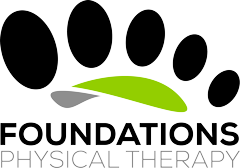How do your know if your core is doing a good job of stabilizing and supporting you? And helping you to move well from the center of your body out to your extremities?
When working with my clients I typically do several tests to see if their core is functioning well. I will discuss a few simple ones you can do at home on yourself.
Single Leg Stance
Here’s one way to check your core stability: place both feet together, lift one knee up to the height of your waist and notice how stable you are, then switch sides. If you feel wobbly on BOTH sides this shows some issues with core instability. If you are unstable on just ONE side then I would suspect some imbalances in your hip or ankle.
Breathing Assessment
Next, take a deep breath. Do your shoulders rise up? This is a reverse breath pattern. Ideally when we take a deep breath our lower rib cage expands and our abdomen fills with air. If your shoulders rise up, then your diaphragm is not expanding fully. This causes your abdominals and low back muscles to remain pretty much stagnant. If the abs and back muscles expand on the inhale then they are able to contract upon exhale which contributes to better support and function of your core.
Toe Touch
The third simple assessment I will teach you is the toe touch test. Stand with your feet together and your knees straight. Reach down toward your toes. Notice how far you can reach, ideally you can touch your toes. Also, look in a mirror or take a video of yourself doing this. When you are flexed forward trying to reach your toes, notice if your entire spine has an even smooth curve. We don’t want flat parts, exaggerated curves or kinks along the spine when we are in this position.
Often we have a flattened lumbar spine (low back) and and increased curve in the mid back (thoracic spine). Some people also have a Dowager’s hump (increased flexion at the base of the neck that often looks like a “bump”). If your spine does not share the load evenly when you flex forward, and if you cannot reach your toes, these are signs of a core that is not functioning optimally.
Why Does This matter?
If you do not do well with these assessments, this shows that your core muscles are disorganized, and that some muscles are over working while others are not doing their job well. Basically, when your core is not doing it’s job well, other parts of your body always have to compensate for this.
If your core is not functioning at it’s best this can contribute to:
- pain anywhere in the body
- reduced efficiency and performance
- stiffness
- balance problems
- stress and strain
Now What?!
If you noticed that you do not “pass” some or all of these tests, I recommend getting your core function assessed by a movement professional. This person can also help you get your core muscles functioning more optimally. Often it is not that we have true core weakness, but that certain core muscles are inhibited, and other muscles are taking over and firing more quickly.
The solution is NOT doing a bunch of crunches, sit ups or planks, because the compensating muscles will likely just get stronger and cover up the fact that your weaker core muscles are not doing their job very well!
One simple thing you can start practicing right away is stacking your posture and expanding your lower rib cage when you inhale. You may feel that your body is fighting you on expanding this way, with practice it should get better and there are also techniques you can learn to help you expand your diaphragm more fully.
I love examining the way your INCREDIBLE body figures out how navigate through life even though some muscles have gone on vacation 😉 Believe me, I am working on overcoming years of compensation in my body too!!


Love this
Thank you!
Thanks Andrea, I can go on ALL DAY about this stuff so I appreciate that you found value in it!!